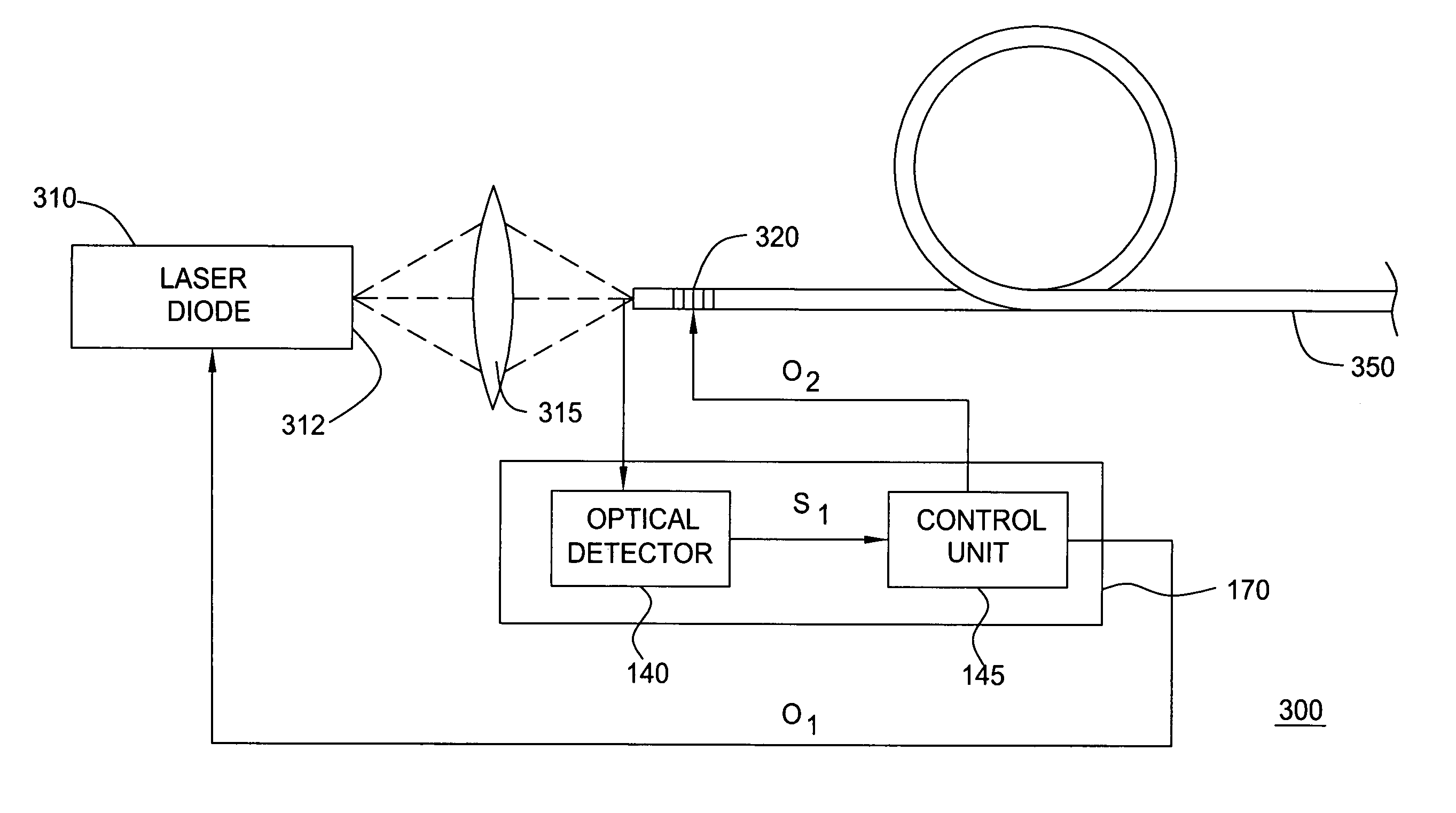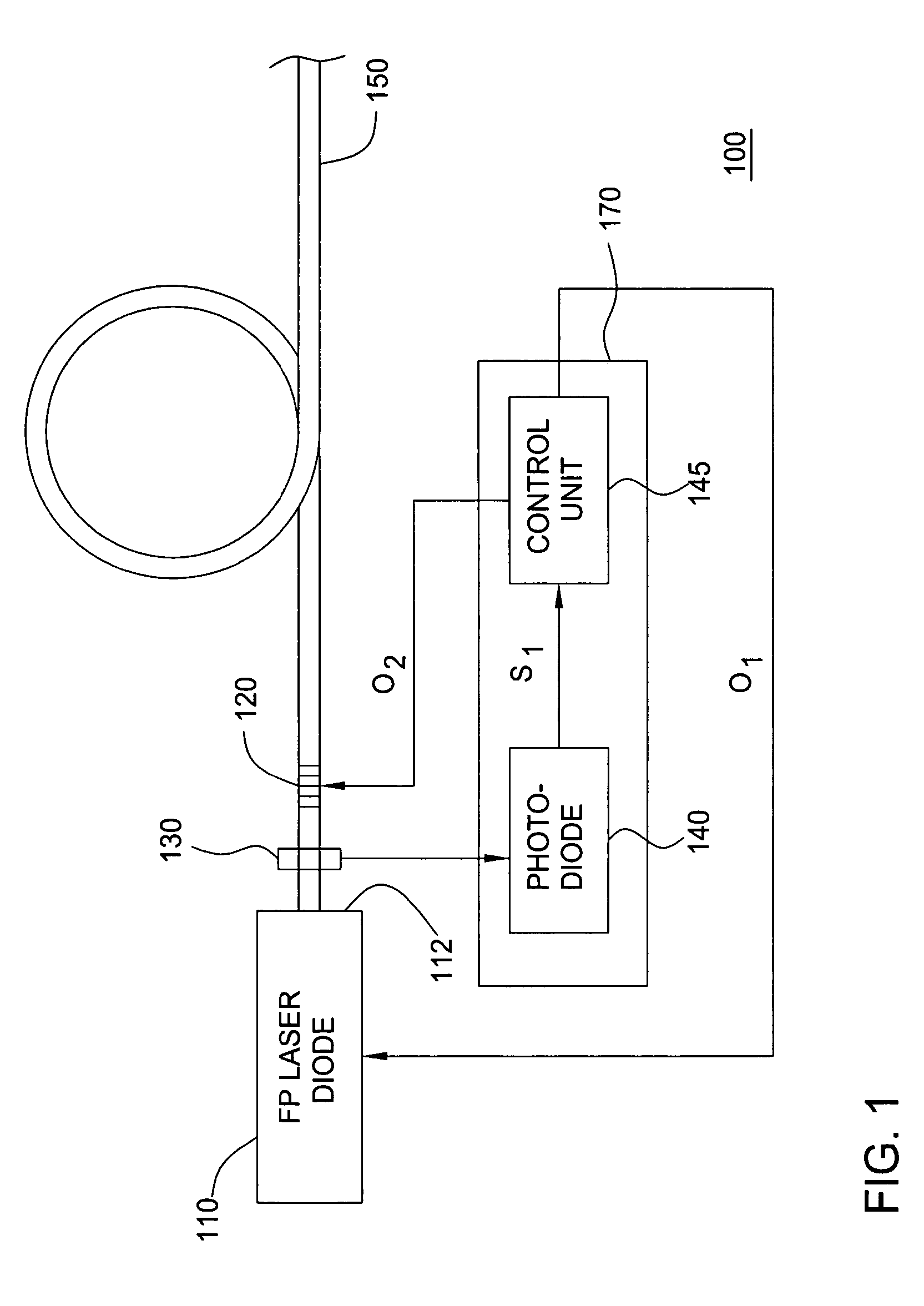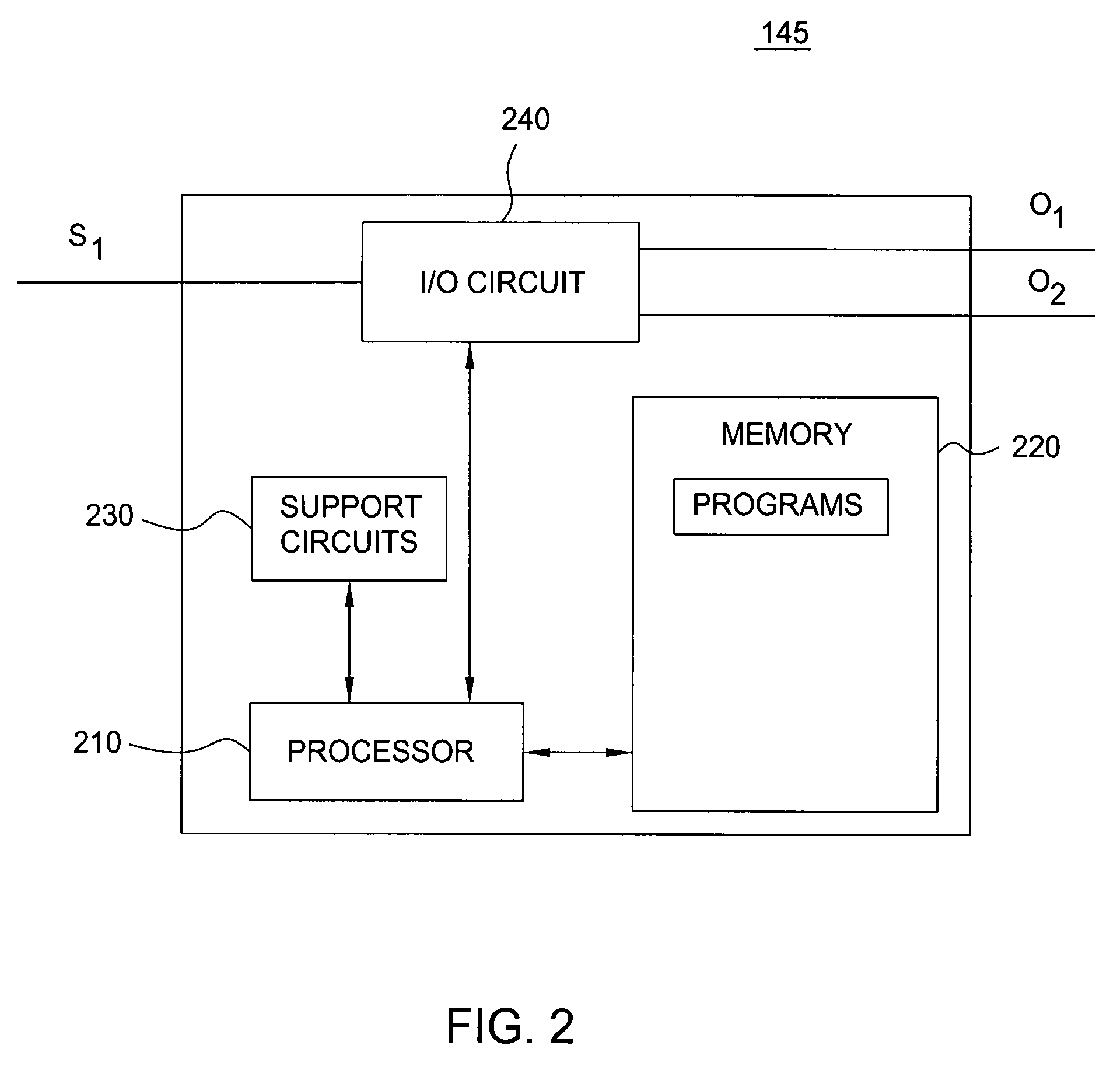Low relative intensity noise fiber grating type laser diode
a laser diode and fiber grating technology, applied in the field of laser sources, can solve the problems of increasing the challenges inherent in optical amplifier design, limiting the dynamic range of output power of the raman optical amplifier, and affecting the performance so as to reduce the relative intensity noise of the fiber grating and reduce the relative intensity noise of the laser diode
- Summary
- Abstract
- Description
- Claims
- Application Information
AI Technical Summary
Benefits of technology
Problems solved by technology
Method used
Image
Examples
Embodiment Construction
[0014]Although various embodiments of the present invention are being described herein with respect to fiber grating stabilized laser diodes, the specific embodiments of the present invention described herein should not be treated as limiting the scope of the invention. It will be appreciated by those skilled in the art informed by the teachings of the present invention, that the concepts of the present invention may be applied in substantially any laser system having a fiber grating and for substantially any application wherein a laser having low relative intensity noise is desirable.
[0015]Fiber grating wavelength stabilized lasers typically comprise a laser diode, a focusing system, a fiber grating (typically a Fiber Bragg Grating) and a transmission fiber. The laser diode is pumped by current injection and is configured to emit radiation primarily from a front facet. In such fiber grating wavelength stabilized lasers, the optical signal of the laser diode is focused and coupled t...
PUM
 Login to View More
Login to View More Abstract
Description
Claims
Application Information
 Login to View More
Login to View More - R&D
- Intellectual Property
- Life Sciences
- Materials
- Tech Scout
- Unparalleled Data Quality
- Higher Quality Content
- 60% Fewer Hallucinations
Browse by: Latest US Patents, China's latest patents, Technical Efficacy Thesaurus, Application Domain, Technology Topic, Popular Technical Reports.
© 2025 PatSnap. All rights reserved.Legal|Privacy policy|Modern Slavery Act Transparency Statement|Sitemap|About US| Contact US: help@patsnap.com



